Abstract
Two schedules of feedback were examined to determine their relative effects on the acquisition and maintenance of three health-care routines: feeding, positioning, and transferring physically disabled patients. Four direct service providers' performances in the natural environment were measured weekly. Concurrent schedules and multiple baselines across subjects and response classes were used to evaluate the effects of written instructions combined with either continuous, intermittent, or nofeedback schedules. Results showed that instructions alone led to slight and usually brief changes. Marked improvements were noted after feedback was introduced, with the continuous schedule producing more rapid acquisition. Follow-up measures indicated performance maintenance for both schedules. Subjects rated the feedback programs favorably and recommended provision of this service to co-workers. Cost estimates indicated that, although considerable time was spent developing the observational system, the feedback procedure was relatively inexpensive, easy to use, and did not interfere with patient care.
Full text
PDF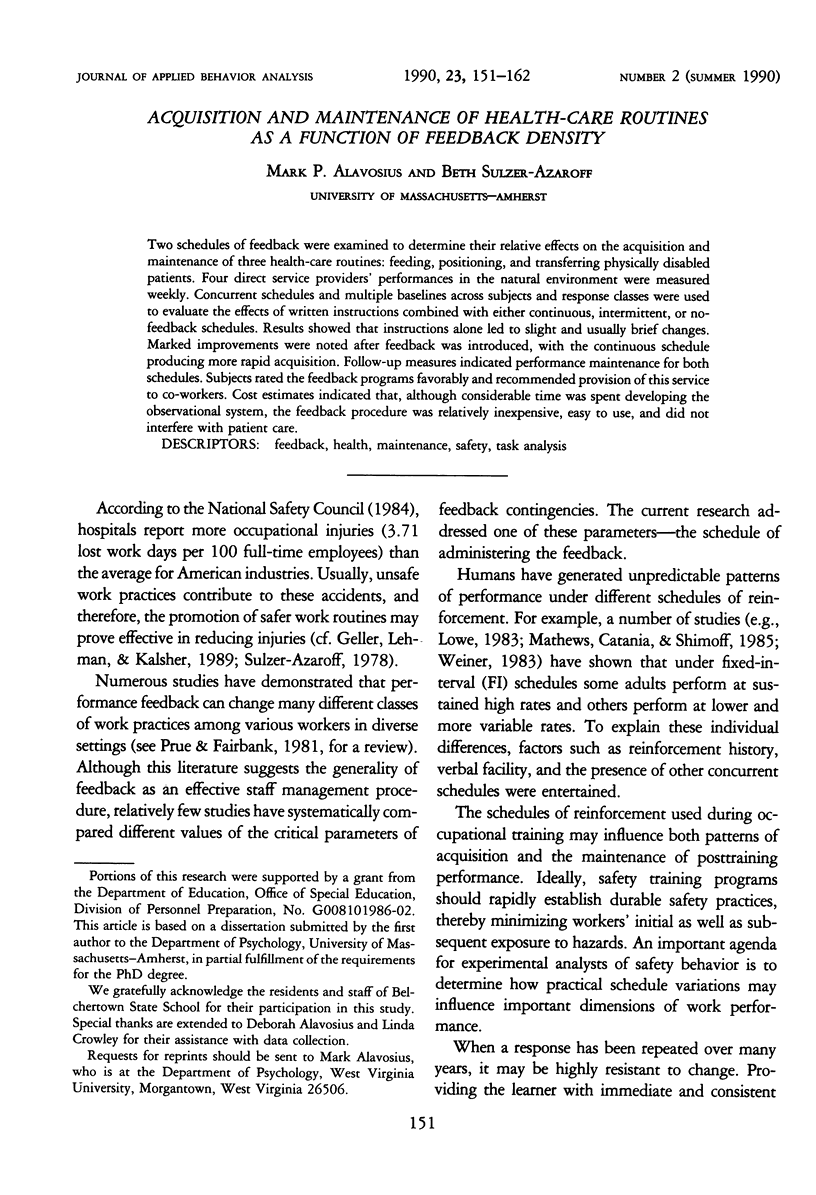
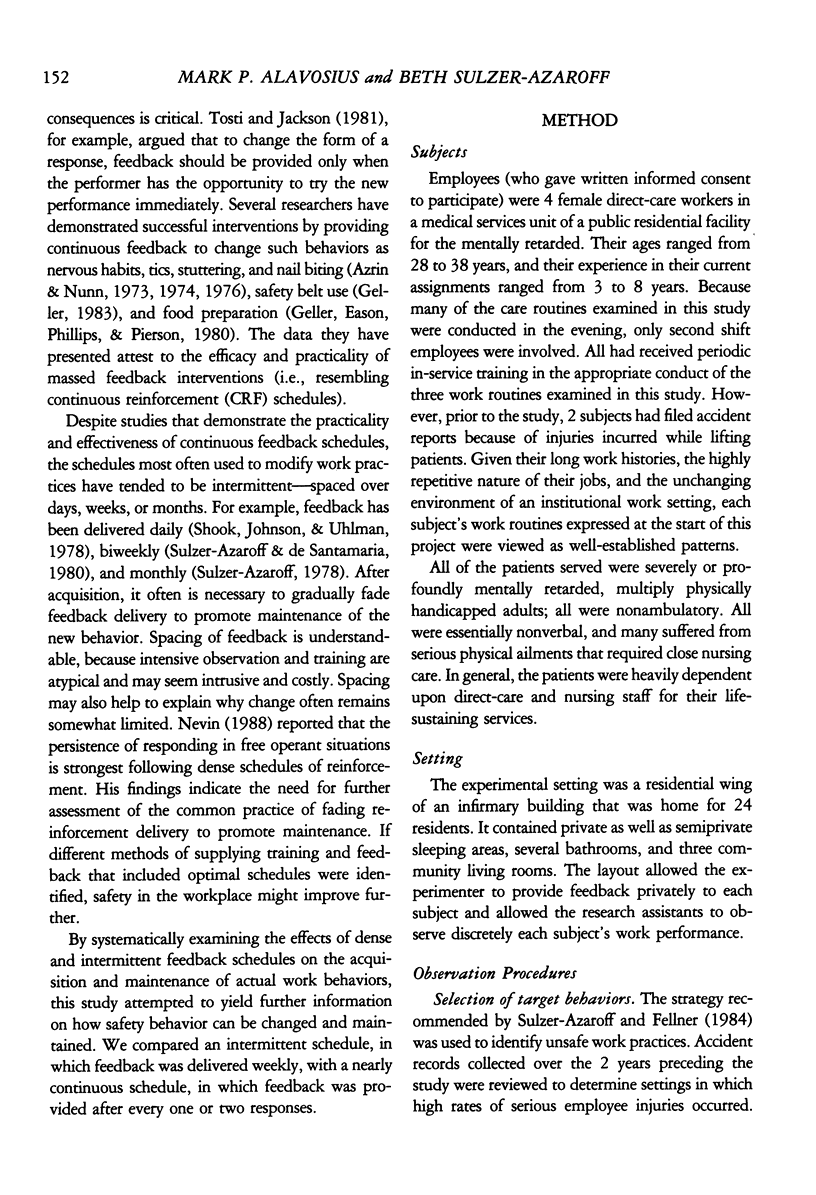
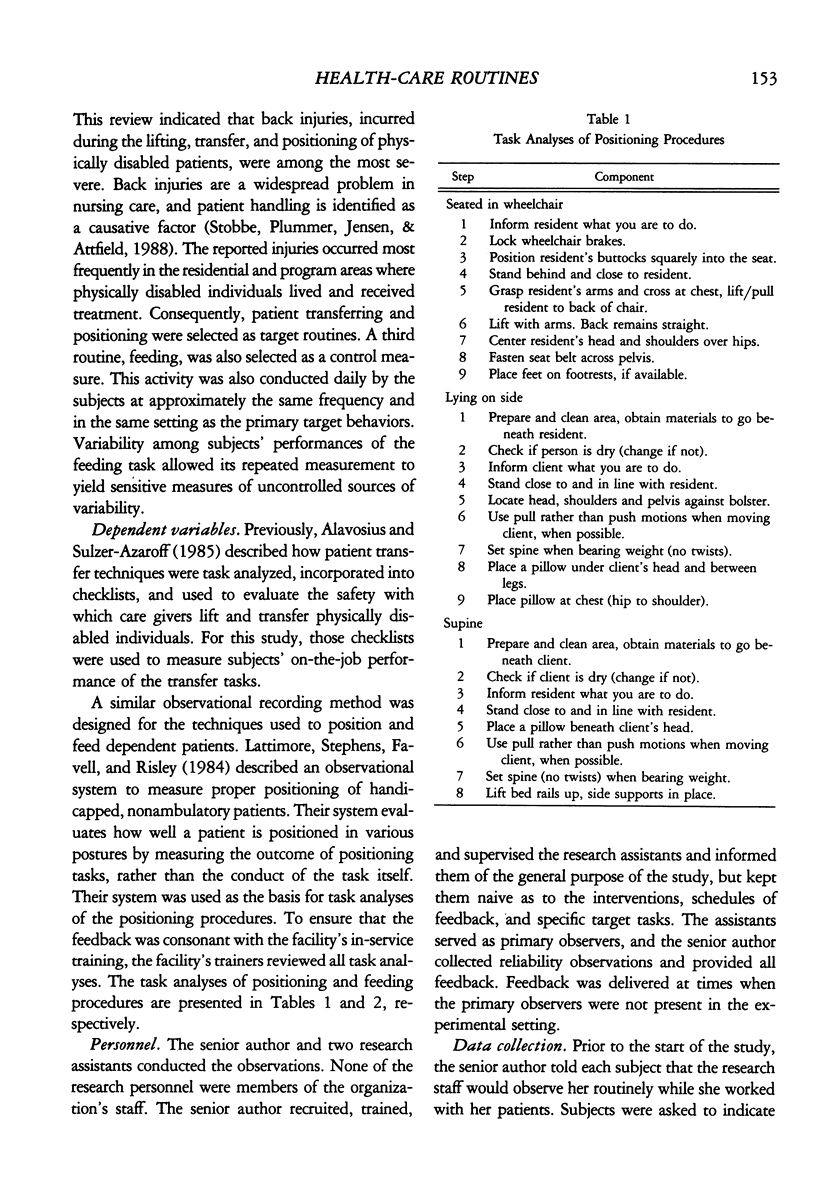
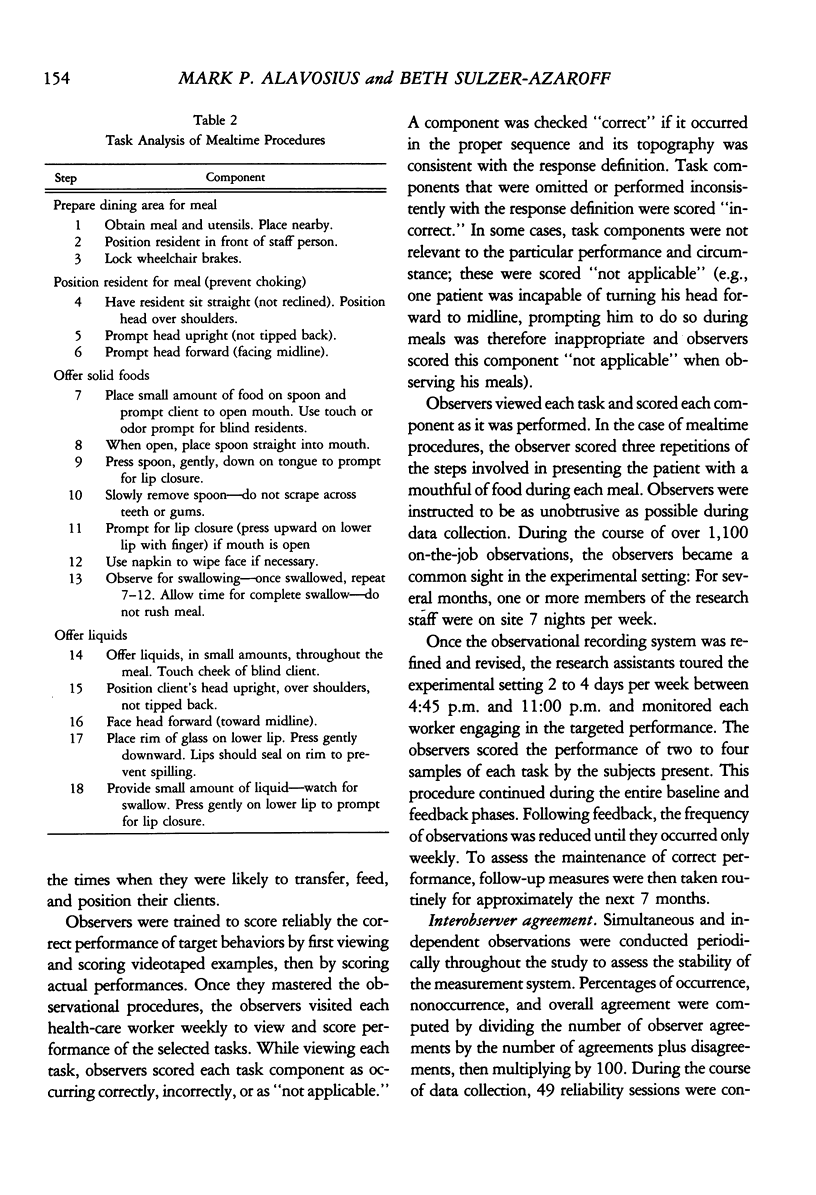
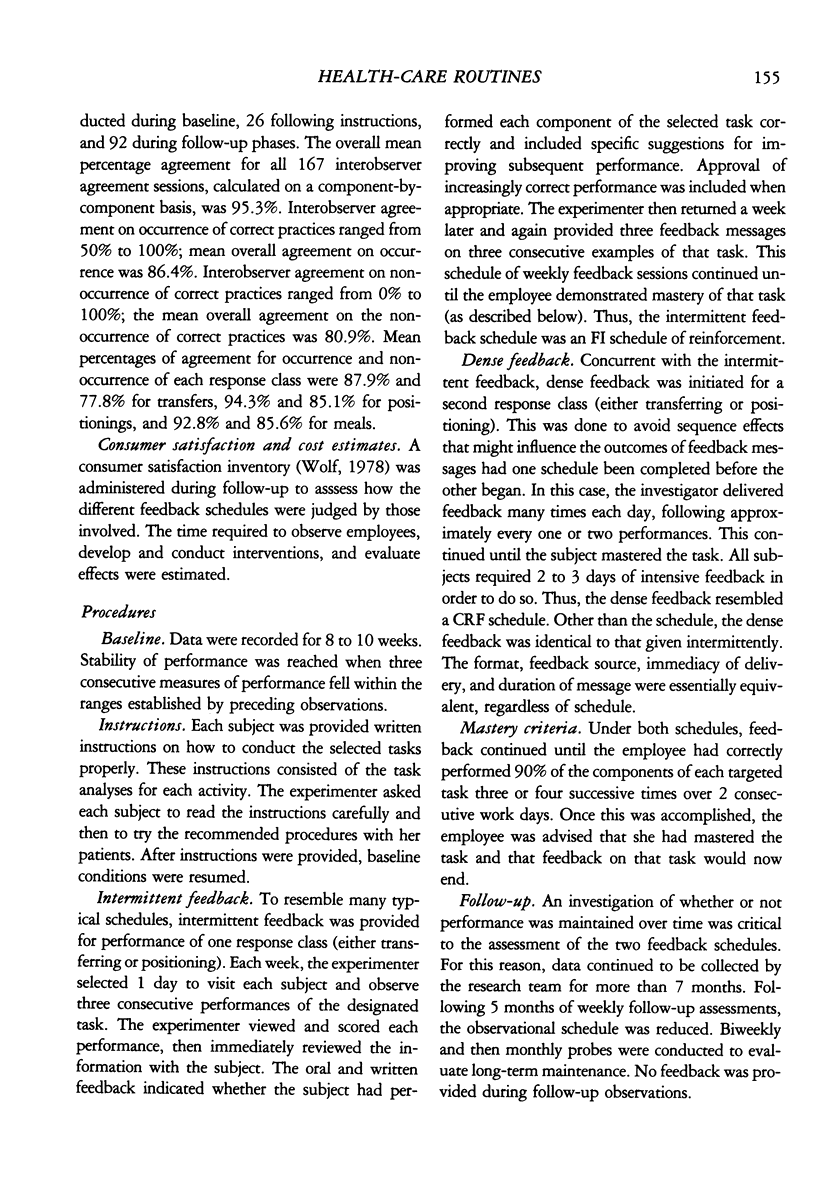
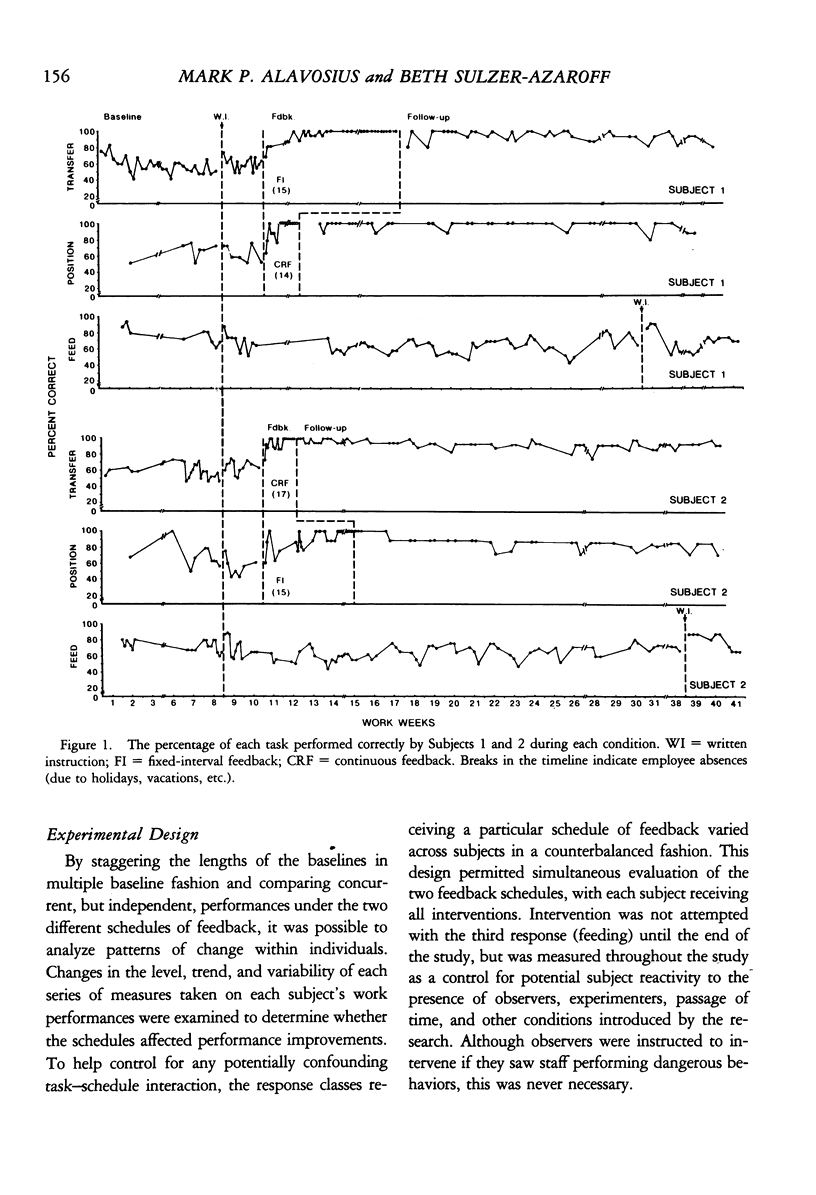
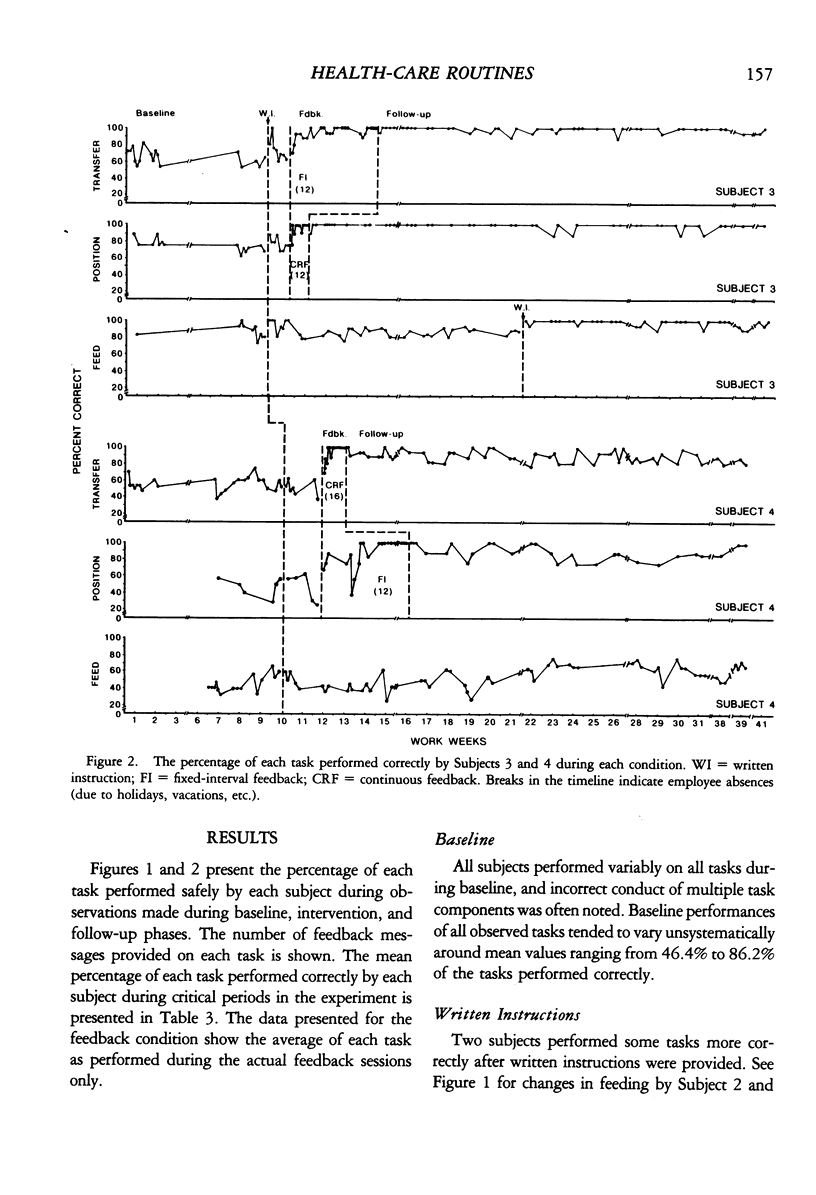
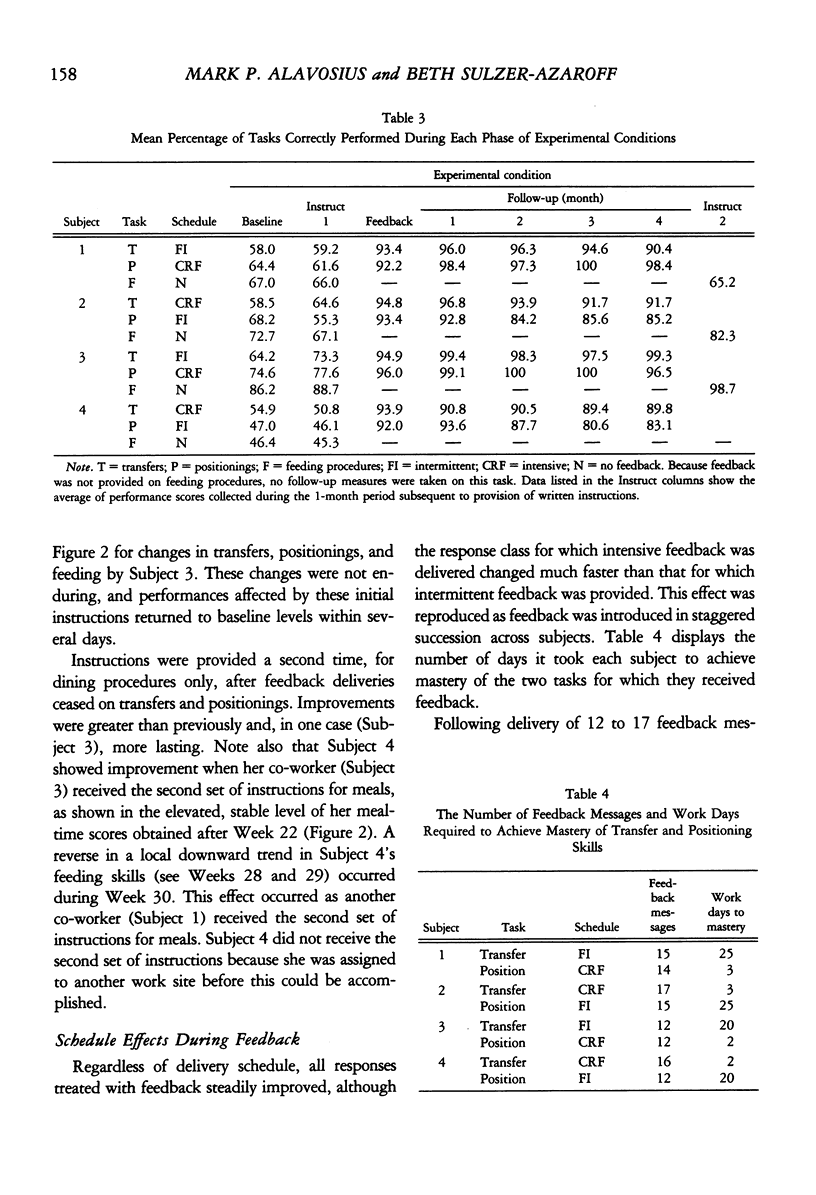

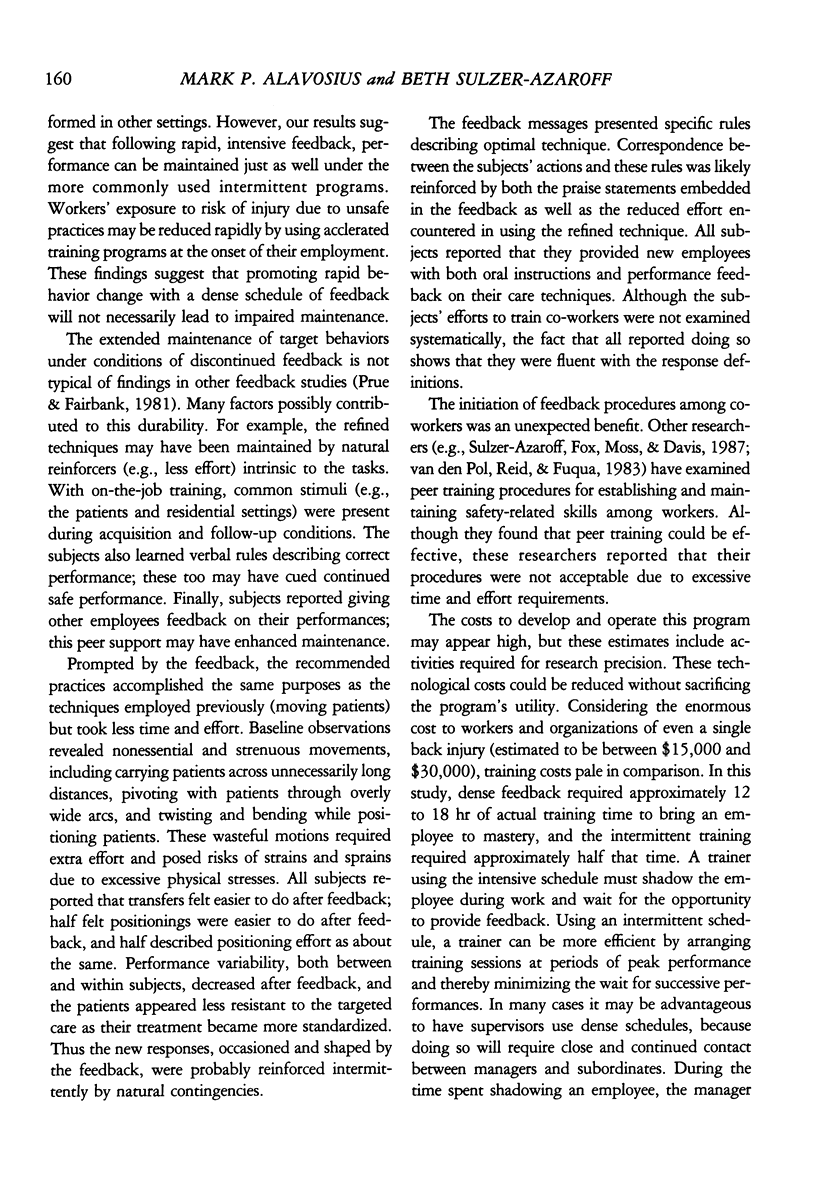
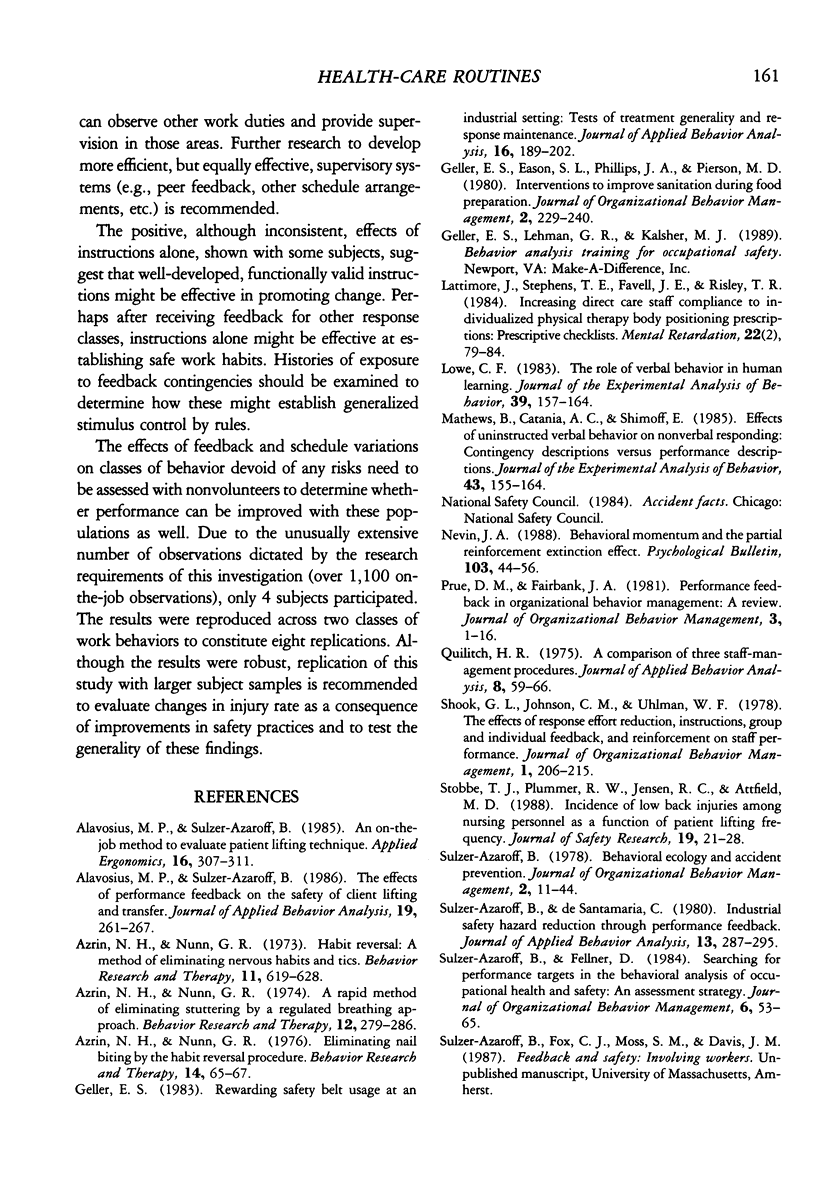
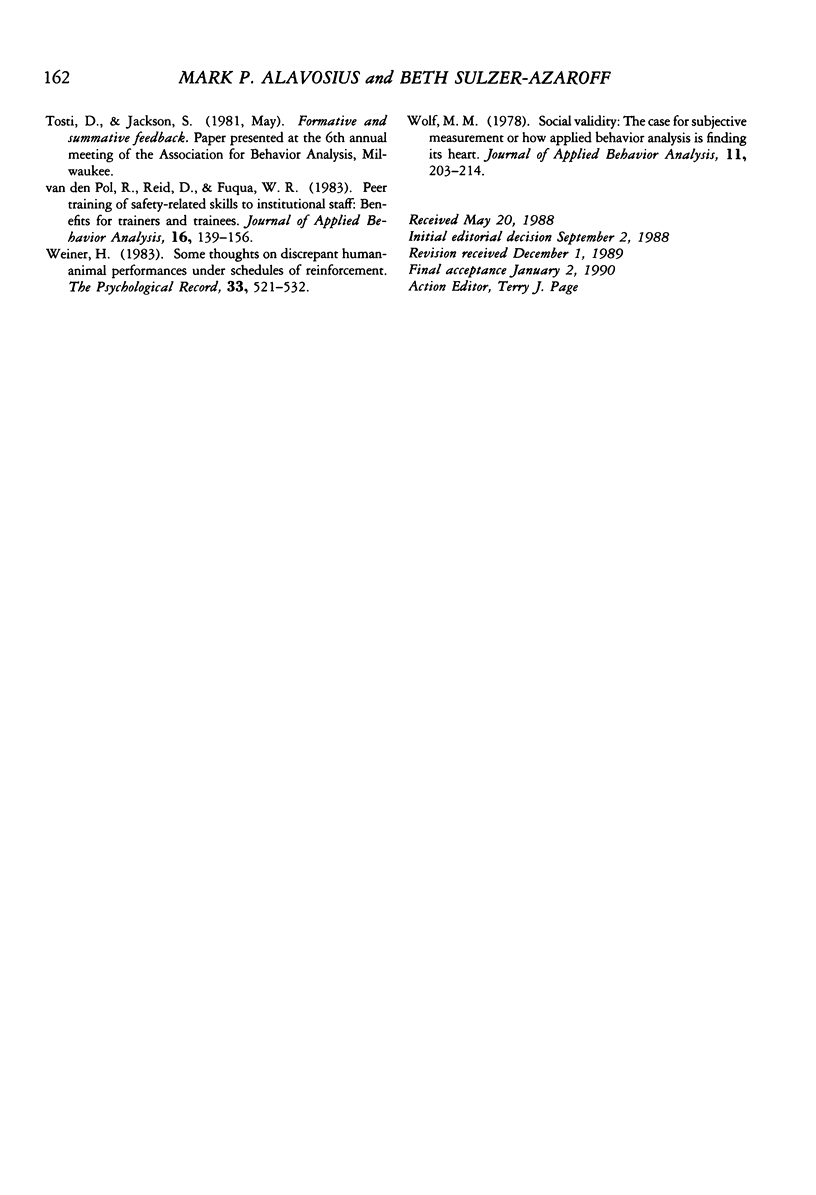
Selected References
These references are in PubMed. This may not be the complete list of references from this article.
- Alavosius M. P., Sulzer-Azaroff B. An on-the-job method to evaluate patient lifting technique. Appl Ergon. 1985 Dec;16(4):307–311. doi: 10.1016/0003-6870(85)90135-8. [DOI] [PubMed] [Google Scholar]
- Alavosius M. P., Sulzer-Azaroff B. The effects of performance feedback on the safety of client lifting and transfer. J Appl Behav Anal. 1986 Fall;19(3):261–267. doi: 10.1901/jaba.1986.19-261. [DOI] [PMC free article] [PubMed] [Google Scholar]
- Azrin N. H., Nunn R. G. A rapid method of eliminating stuttering by a regulated breathing approach. Behav Res Ther. 1974 Nov;12(4):279–286. doi: 10.1016/0005-7967(74)90002-3. [DOI] [PubMed] [Google Scholar]
- Azrin N. H., Nunn R. G. Habit-reversal: a method of eliminating nervous habits and tics. Behav Res Ther. 1973 Nov;11(4):619–628. doi: 10.1016/0005-7967(73)90119-8. [DOI] [PubMed] [Google Scholar]
- Geller E. S. Rewarding safety belt usage at an industrial setting: Tests of treatment generality and response maintenance. J Appl Behav Anal. 1983 Summer;16(2):189–202. doi: 10.1901/jaba.1983.16-189. [DOI] [PMC free article] [PubMed] [Google Scholar]
- Lattimore J., Stephens T. E., Favell J. E., Risley T. R. Increasing direct care staff compliance to individualized physical therapy body positioning prescriptions: prescriptive checklists. Ment Retard. 1984 Apr;22(2):79–84. [PubMed] [Google Scholar]
- Lowe C. F., Beasty A., Bentall R. P. The role of verbal behavior in human learning: infant performance on fixed-interval schedules. J Exp Anal Behav. 1983 Jan;39(1):157–164. doi: 10.1901/jeab.1983.39-157. [DOI] [PMC free article] [PubMed] [Google Scholar]
- Matthews B. A., Catania A. C., Shimoff E. Effects of uninstructed verbal behavior on nonverbal responding: Contingency descriptions versus performance descriptions. J Exp Anal Behav. 1985 Mar;43(2):155–164. doi: 10.1901/jeab.1985.43-155. [DOI] [PMC free article] [PubMed] [Google Scholar]
- Nunn R. G., Azrin N. H. Eliminating nail-biting by the habit reversal procedure. Behav Res Ther. 1976;14(1):65–67. doi: 10.1016/0005-7967(76)90046-2. [DOI] [PubMed] [Google Scholar]
- Quilitch H. R. A comparison of three staff-management procedures. J Appl Behav Anal. 1975 Spring;8(1):59–66. doi: 10.1901/jaba.1975.8-59. [DOI] [PMC free article] [PubMed] [Google Scholar]
- Sulzer-Azaroff B., de Santamaria M. C. Industrial safety hazard reduction through performance feedback. J Appl Behav Anal. 1980 Summer;13(2):287–295. doi: 10.1901/jaba.1980.13-287. [DOI] [PMC free article] [PubMed] [Google Scholar]
- Wolf M. M. Social validity: the case for subjective measurement or how applied behavior analysis is finding its heart. J Appl Behav Anal. 1978 Summer;11(2):203–214. doi: 10.1901/jaba.1978.11-203. [DOI] [PMC free article] [PubMed] [Google Scholar]
- van Den Pol R. A., Reid D. H., Fuqua R. W. Peer training of safety-related skills to institutional staff: benefits for trainers and trainees. J Appl Behav Anal. 1983 Summer;16(2):139–156. doi: 10.1901/jaba.1983.16-139. [DOI] [PMC free article] [PubMed] [Google Scholar]


